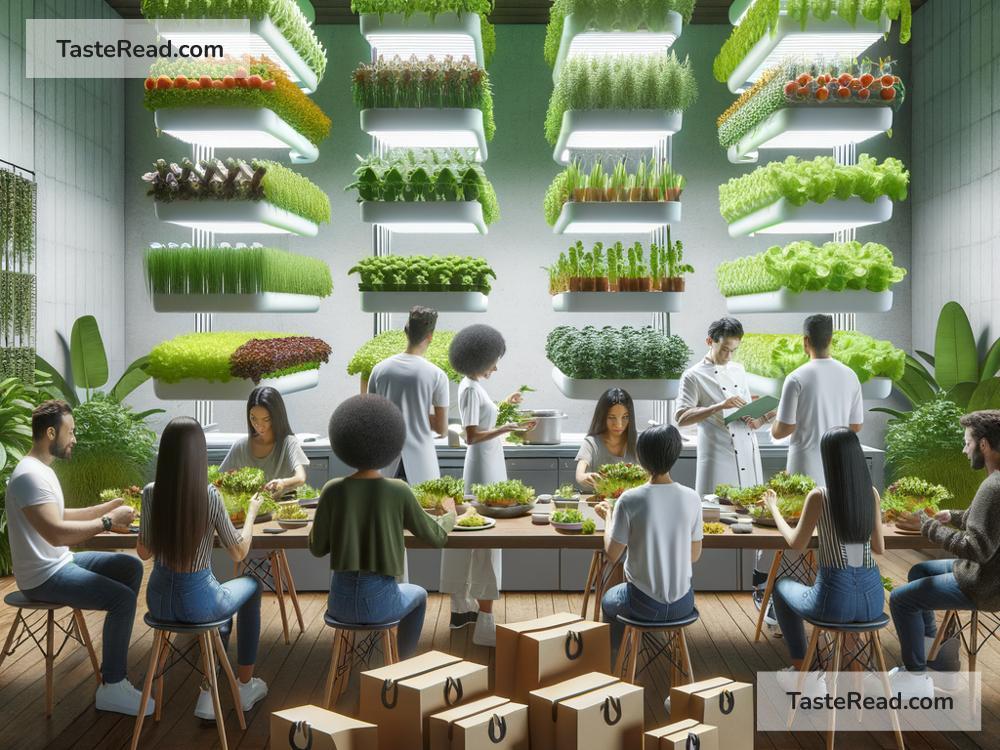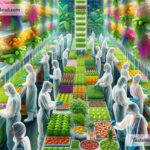The Future of Food: Why We Need Participatory Solutions
The way people eat is changing. Around the world, climates are shifting, populations are growing, and technology is advancing quickly. These changes affect how we grow, process, and consume food. But while innovation in food is exciting, challenges remain. If we want a system that works for everyone, the future of food needs to include participatory solutions—where farmers, businesses, governments, and consumers all work together.
The Challenges We Face
Food connects everyone, but the system that produces it is under stress. There are several big challenges ahead:
-
Climate Change: Rising temperatures, unpredictable weather, and droughts are making farming harder. Certain crops are struggling to grow, and this could lead to food shortages.
-
Population Growth: The world’s population is expected to rise to nearly 10 billion by 2050. Feeding that many people will require bold solutions, as the demand for food—especially protein—will continue to grow.
-
Diet-Related Health Issues: Many people eat too much processed food, which can lead to diseases like diabetes and heart issues. At the same time, millions of people struggle with hunger and malnutrition.
-
Food Waste: A shocking amount of food is wasted—roughly one-third of all the food produced globally. That wasted food could feed millions of hungry people.
These issues are interconnected, and tackling them all at once won’t be easy. But there’s hope! With creativity, collaboration, and new ideas, we can build a better food future.
What Is the Future of Food?
The future of food will look very different from what we know today. Here are some exciting trends that are shaping the way food is produced and eaten:
-
Alternative Proteins: Meat production is resource-intensive, using large amounts of water and land while producing greenhouse gases. Scientists are working on alternatives like lab-grown meat, plant-based proteins, and even insect-based meals. These foods could provide protein in a way that’s better for the planet.
-
Precision Farming: Advanced technology, like sensors and drones, is helping farmers grow crops more efficiently. Precision farming uses data to target exactly how much water, fertilizer, or pesticide is needed, reducing waste and protecting the environment.
-
Climate-Resilient Crops: Scientists are developing plants that can survive extreme heat, droughts, and floods. These crops can help farmers deal with the challenges of climate change and ensure food supplies remain steady.
-
Urban Farming: With cities expanding, traditional farmland is shrinking. Urban farming uses rooftops, vertical farming towers, and indoor greenhouses to grow food. This could make fresh produce more accessible to people in crowded cities.
-
Food Innovation: Technology is producing new kinds of food. For example, startups are creating milk, cheese, and eggs made without animals using fermentation and other techniques. These products mimic traditional foods while being better for the planet.
-
Less Waste, More Recycling: Companies are finding ways to turn food waste into useful products, such as biofuel, animal feed, or compost. This approach reduces landfill waste and helps the environment.
These solutions sound promising, but the big question is: who decides what the future of food looks like?
Why Participatory Solutions Matter
For a food system to truly work, it has to include the voices of everyone involved—especially the people it affects most. Here’s why participatory solutions matter:
-
Farmers as Experts: Farmers are on the frontline of food production. They know what works and what doesn’t. By including them in discussions about technology and policy, we can ensure solutions meet their needs.
-
Involving Communities: Communities should have a say in decisions about food access. For example, should grocery stores carry more local produce? Should schools offer healthier meals? When communities participate, solutions are tailored to their specific needs.
-
Empowering Consumers: Consumers have power. They can demand more sustainable products, support local farmers, and reduce their own food waste. Education programs can help people make better food choices that benefit both their health and the planet.
-
Collaborative Policy: Governments, scientists, businesses, and organizations need to work together to create fair policies. For example, subsidies for sustainable farming or regulations against excessive food waste require input from many stakeholders to be effective.
Participatory solutions emphasize collaboration. Instead of a top-down approach—where decisions are made by a few—this model values ideas from all sides.
Small Steps Lead to Big Change
The great thing about participatory solutions is that anyone can join the movement, no matter how big or small their contribution is. Here are some ways to get started:
-
Support Local Farmers: Buy local and seasonal food. It’s better for the environment and supports small-scale farmers who grow crops sustainably.
-
Waste Less at Home: Be mindful of how much food you buy. Get creative with leftovers and compost food scraps instead of throwing them away.
-
Try Alternative Proteins: Experiment with plant-based meals or other protein options like lentils, beans, and tofu. Every small change helps reduce the demand for resource-heavy meat.
-
Be Informed: Learn about food issues and share that knowledge with friends and family. The more people understand the challenges, the more likely they are to support solutions.
-
Advocate for Change: Join local or global organizations working for better food policies. Write to your representatives or volunteer to help tackle hunger and food waste.
Moving Toward a Better Future
The future of food is exciting but also uncertain. While technology provides hope, it won’t solve every problem overnight. Participatory solutions—where farmers, scientists, businesses, and consumers collaborate—are key to building a sustainable food system that feeds everyone fairly and responsibly.
If we work together, we can ensure that the future of food is innovative, equitable, and eco-friendly. By taking small steps today, we can shape a better tomorrow—for both ourselves and the planet. Remember, food isn’t just something we eat; it’s a connection to our health, our communities, and our future. Let’s make it a future we’re proud of.


